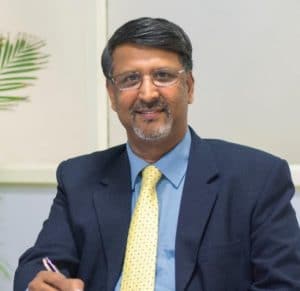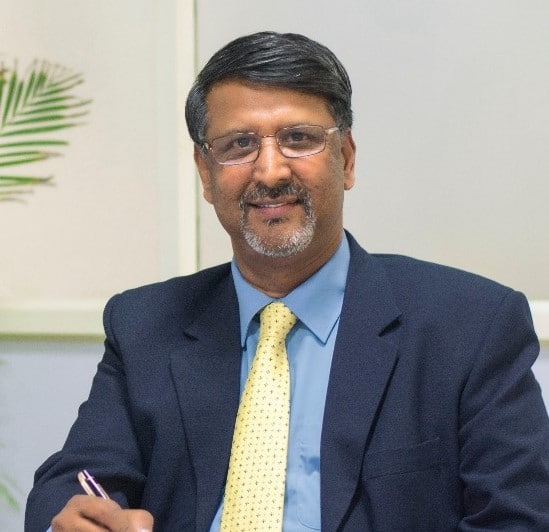The Internet of Things still have a long way to go when it comes to mass adoption in India. While the B2B landscape has been more instrumental in IOT adoption, the general populous is yet to figure it out. A.Vaidyanathan, founder and managing director of Personal Air Quality Systems (P) Ltd shares with Electronicsforu.com Network his view on the industries and business trends that are most likely to drive IoT adoption in India.

Q) Many opine that IoT is just a buzzword that industry Gurus have coined to create hype? Do you agree with that line of thought?
Any initiative by the industry or the thought leaders of the industry commenting on the canvassing of their profession looks like a cliché. What does look like a cliché gathers some momentum. While we think to dismiss it off as a cliché, there is a need to get an attractive caption on the whole thing. Internet of Things (IoT) consisting of the device, real-time data sensing and the ability to interact need to have a newer cliché or jargon that can capture the new happenings and new enablers in a single word.
Q) In your opinion, is the Government of India (GoI) playing any significant role in expanding the IoT market right now?
The current government for the last two terms has made a progressive shift towards digitisation. They have understood the virtues of digitisation and transformation. And they are trying to encourage some bit of IoT through various programs. I think this government has been consciously trying to give the right type of signals in terms of the power of digitisation and IoT.
Unfortunately, the wide acceptance or implementation of programs like smart cities has not taken off as desired by the government. Also, it has not been possible to define specific protocols and such in the country. But there is a proactive thinking and a willingness to improve.
Q) Are you satisfied at the rate of deployment of IoT solutions in India?
The current implementation of IoT is not up to the mark. Unfortunately, Indian market is not mature enough to talk about the IoT model of revenue sharing for the data and analytics because of which the IoT market has not taken off. The B2B industrial space is accepting that the IoT technology, but by and large the penetration is very poor as people have not adapted to the new models of solutions delivery and payment recovery mechanisms required for IoT.
Q) Which industry segments do you believe will be driving a larger chunk of demand? Why?
The high-value addition manufacturing industry such as automobile or defence manufacture and heavy engineering (electro-mechanical and electronics engineering) are some segments I expect will implement IoT. Next possibly, would be the pharma industry which will possibly have a mix of both private and public sector companies. And the third one could be the service industries. The hospitals and the hotels, as an industry should get into acceptance of IoT in a far more sensitive way.
Q) What according to you is the biggest challenge for a startup in the current scenario?
With respect to the decision making between market and talent, 5 – 7 years or a decade back, the competition could have been very fierce as it was unthinkable for people to risk their careers and launch a startup. Company failure was perceived as an individual failure. Currently, the startup environment in our country has positively shifted due to the cultural mindset and approach to welcome startups. This is definitely not bad. However, the market remains a big challenge due to lack of market readiness.
There is a need to recognise more R&D companies who can develop a pilot, provide innovative solutions and then can be tried by end customers. This requires funding. India is a large market and there are opportunities across the country. If funding is there, then talent would come and market space creation wouldn’t be a challenge.
Q) What is the biggest obstacle that is hindering the growth of IoT?
There is a willingness and openness in the ecosystem to try new technologies and product solutions. The government should implement that culture into the country. ISRO and DRDO happened because the government gave them the freedom to develop satellites and defence systems. So, when you craft a policy, you need to welcome and embrace the new generation of technologies such as IoT, drones, AI, AR/VR. To do this, R&D should be given a higher importance.
The thought leaders, industries and academicians need to come together and frame a guideline for encouraging new technologies. That will create an incentive for enterprises belonging to private and other sectors to try to innovate technologies by creating a large marketplace.
Q) What’s your strategy to create a differentiation for your solutions vis-a-vis your competitors?
We implement a new generation of sensors with which we try to get reasonable and accurate data. We generate solutions with a combination of technologies, such as – low cost, new generation of sensors, IoT platform to get real-time data and a calibrated model that is integrated for the machine learning layer to analyse data and get insights.
Q) How do you see your IoT-related business growing in the next 2-3 years?
It is disruptively growing and going forward it will be a paradigm shift. The way “Uberisation” has brought car to everybody, direct cloud has brought services to everybody, IoT will ensure multiple number of services and technology driven backbone will ensure it’s available. And you will be agreeing to pay because the long term prospective will be higher.
Q) What’s your bigger challenge–acquiring customers or acquiring talent? What’s your strategy in resolving the same?
Well, a startup has got multiple challenges. Getting the talent pool and getting the marketplace is equally difficult. Without any doubt, getting funding is also a challenge. If you are a technology company with solid technology pioneering initiative, very often people are less of a problem because people are willing to take a chance. Unlike the past, investors are willing to take a plunge into a startup. When there is a stimulation; a lot more excitement, then marketing can be a challenge. Each one can be a challenge for different people.
Q) How would you describe your solution to a non-technical decision-maker at the client’s end?
When you talk about a pioneering or a technology solution, then it is always an issue. Today people have understood Cloud Computing and IoT, but what have they really understood? Anytime when you talk about a technology-driven new solution, the perception of the market is different. So, if I try to say any IoT solution about air quality because I believe it’s data that’s a starting point, then I’m having the same problem because people say, “What are you talking about data, give me a solution.” But there isn’t a solution without accurate data. So I am struggling. But when you talk of a technology solution driven by data, we need to believe that data will start fetching money. Initially, getting money through data is a challenge. So to close back on facts, what do we do? We are providing cleaner solutions delivered by accurate data, we are providing clean air solutions driven by accurate data. We have solutions for different verticals. When you talk about smart buildings, increasingly people are understanding better. Smart spaces and cities are made by data-driven solutions.










